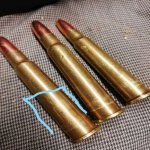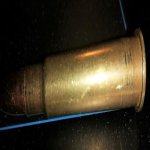- Location
- Western Manitoba
Actually, the "helix" is the rear face of the locking lugs and the seats within that receiver that engage those lugs - they are not vertical - they are slightly sloped, so they cam the bolt forward continually as the bolt is being lowered - most modern rifles have flat, vertical lock up lugs - some initial advance at the start of the bolt closure, but pretty much vertical for about 1/2 or more of the bolt handle closing motion. On the Lee Enfield (and P14 and M1917), the bolt face is off the cartridge case as soon as the bolt handle is lifted any amount - on a mauser or similar, have to lift bolt handle about half way before it backs off that cartridge case.
There is no "pull" to get the bolt coming backwards on opening, except at the rear end - the extraction cams. So two sets of cams - one to push the cartridge in, another to pull that bolt rearward. On a very shallow slope - you can watch the bolt advance and retreat while the bolt handle is being opened or closed - does not happen on many other designs.
There is no "pull" to get the bolt coming backwards on opening, except at the rear end - the extraction cams. So two sets of cams - one to push the cartridge in, another to pull that bolt rearward. On a very shallow slope - you can watch the bolt advance and retreat while the bolt handle is being opened or closed - does not happen on many other designs.











































































